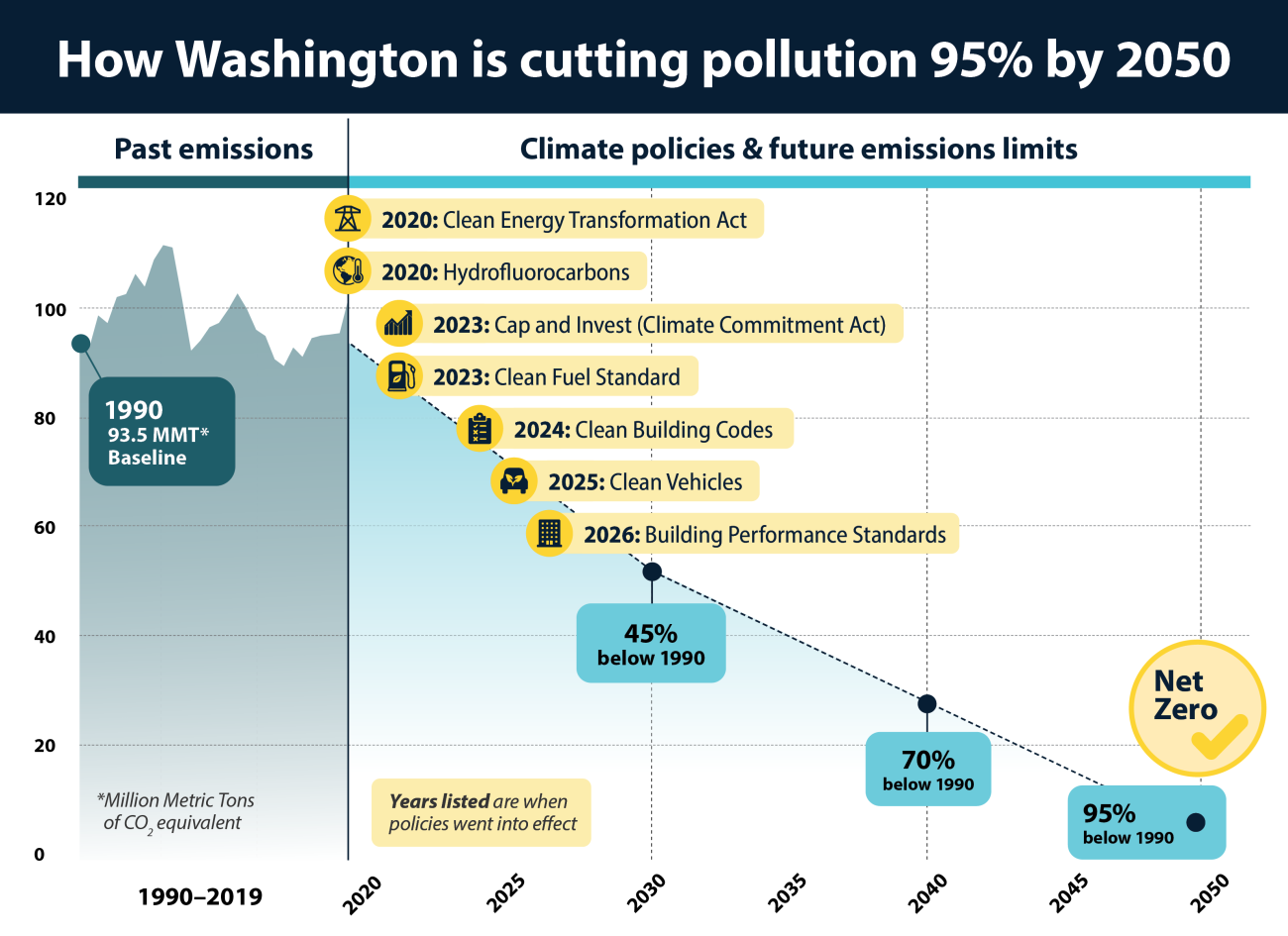Washington state's climate policies all work towards one goal: reducing climate pollution 95% by 2050. State leaders have enacted numerous policies to fight climate change, but the seven described below form the foundation of Washington's climate efforts.

Climate Commitment Act
The state’s Climate Commitment Act (CCA) is the centerpiece of Washington’s climate policies. The policy focuses on the state’s largest polluters. In combination with other state policies, it sets Washington on the path to reducing climate pollution 95% by 2050.
The CCA creates a market-based system for holding the state’s largest polluters accountable and ensures they ratchet down their pollution. Those pollution payments are put to work across Washington state to benefit families, workers, businesses and communities.
Clean transportation
The largest source of climate pollution in Washington is from the transportation sector. Several policies focus on reducing pollution from vehicles including ferries, buses, planes, and medium- and large-sized commercial trucks.
- Clean fuel standard – Requires fuel suppliers to reduce carbon intensity in transportation fuels and increase availability of low-carbon alternatives.
- Zero-emission vehicles by 2035 – Requires all new vehicles sold in Washington to meet zero-emission standards by 2035.
In addition, the first transportation package to include CCA funding is known as Move Ahead Washington. Legislators passed it in 2022. The package includes historic investments in clean transportation options such as free transit for all youth, thousands of new public EV chargers, new hybrid electric ferries, and more.
Clean buildings and housing
The second largest source of climate pollution in Washington is from buildings. Pollution comes from construction, the type of energy used to heat or power the building, and from wasted energy due to things like poor insulation or ineffective windows.
- Clean Buildings Performance Standards – Requires existing large and multi-family buildings to lower fossil fuel consumption and pollution.
- Energy code updates – Updates building codes to require builders to improve energy efficiency and encourage them to connect homes to non-fossil fuel energy sources in new construction.
Clean power
About 80% of Washington’s electricity comes from renewable or clean energy. The majority of that is hydropower. The remaining 20% comes from coal and methane gas.
- Clean Energy Transformation Act – Requires all electricity in Washington state to be 100% zero-emission by 2045.
Super-pollutants
The Legislature approved legislation in 2019 and 2021 to restrict hydrofluorocarbons (HFCs), a potent, heat-trapping greenhouse gas used commonly in air conditioning and refrigeration. Though HFCs only make up a 4% of Washington's climate pollution, they are building up quickly in the atmosphere and would increase to 7-19% if left unchecked.
Tracking Washington’s progress
- The Washington State Department of Ecology tracks greenhouse gas pollution levels.
- The Washington Department of Transportation tracks EV registrations.
- Results Washington monitors multiple energy and environment trends.
- RMI publishes state scorecards.

